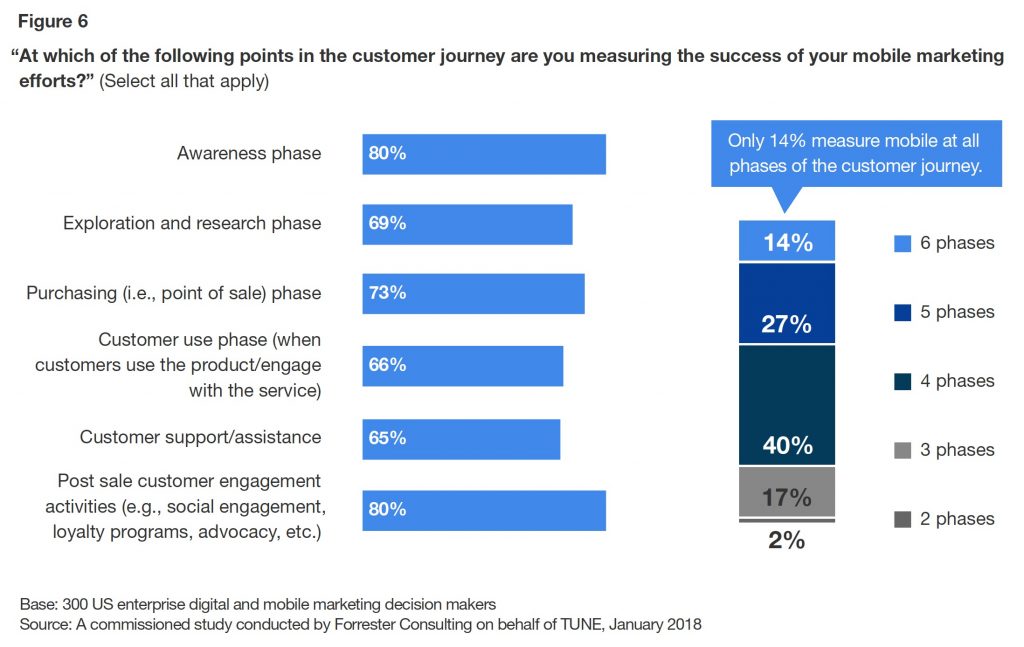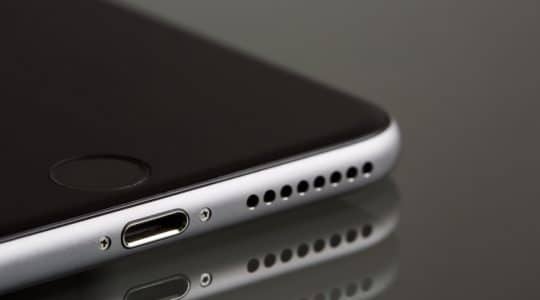
Photo by rawpixel on Unsplash
Everyone Survived the GDPR (Well, Kind Of)
It’s no secret that the GDPR is now in full effect. Although several lawsuits have already been issued, the breadth of the impact remains to be seen in terms of how the GDPR will affect the level of detail marketers can collect and measure about customers, how it affects opt-in rates, and whether the changes are felt most for larger or smaller companies worldwide. Check out our recent post on what’s ahead with the GDPR, including notable first strikes.
Budgets Are Still Underallocated Toward Mobile Measurement
According to Mary Meeker’s 2018 Internet Trends report, daily digital media usage among adults now comes in at 5.9 hours, with the majority of that time on mobile devices. However, advertisers allocate only 26 percent of their budgets to mobile, leaving channels like print, television and desktop over paid for in relation to time spent on them.
Social Media Is the Channel of Choice, But Video Trails Close Behind
According to Nielsen study published in June 2018 of U.S. CMOs, an overwhelming 79% described social media as the channel of choice, with search following close behind at 73% and video (both mobile and online) trailing just behind that. Mobile marketing is no longer a form of marketing; mobile is marketing, and should be measured as such.

Credit: MarketingCharts.com
Lifetime Value Is the Metric of Choice
According to a Salesforce survey, lifetime value is the new metric of choice. But that doesn’t mean marketers are confident they’re making the most of it. Our recent report with Forrester Research revealed that only 14% of surveyed companies actually track throughout the entire journey. Yet marketers who do not have consistent mobile measurement practices across the entire customer journey miss out on key engagement, upsell or cross-sell opportunities, plus reduce the chances they’ll get the highest lifetime values possible from their customers.

Get the rest of the research in the full study, available here for free.
More Devices, More to Measure
Part of the challenge in 2018 is that customers are harder than ever to track. They use a variety of devices, with a full 69% of US adults admitting to multi-tasking on more than one connected device at least sometimes. As such, only 39% of marketing executives say they are able to fully understand their customers’ cross-device behaviors.
Marketers Are Overcompensating With Too Many Metrics
Part of the challenge of mobile measurement as it stands today is that there is just too much to track. Our latest research shows that most marketers juggle between three to nine mobile metrics per customer life-cycle phase. Too many metrics can lead to confusion as to what should be optimized, and what really matters from a business perspective.

Get the rest of the research in the full study, available here for free.
If most marketers could have their way, it would be measuring mobile through a single, unified platform — instead of the multiple point solutions they currently use. Fortunately, we know a thing or two about that. (Wink.)
No One Is Quite Sure How to Measure Voice
Speaking of measurement in the wrong places, there’s an area you’ve heard of (literally) that’s missing when it comes to mobile measurement: voice devices. The number of voice devices skyrocketed in 2017, yet we see marketers in 2018 still grappling with how to measure performance on them. Google has been among the first to lead the charge, recently created Google Shopping Actions, a cost-per-sale ad format for voice search.
The Promise of Artificial Intelligence Looms Large
Artificial intelligence still holds the most intrigue for innovation in mobile measurement. Not only because AI can allow marketers to market better and faster, but because it lends itself to a variety of other new technologies. For example, instead of just using artificial intelligence to segment customers based on clicks, location, and buying patterns, artificial intelligence is now even measuring the sentiments and emotions of customers, which allows marketers to go far and above in terms of personalization.
Keeping Pace With Mobile Measurement
Innovation within mobile continues to escalate at a faster pace than ever. Fun fact: it took consumers 80 years to accept the dishwasher, but just 10 years to accept the Internet of Things. We’d love to hear in the comments below — what have you seen as the biggest development in 2018? Has anything surprised you?
And if you can’t get enough of this stuff, download our free recent report with Forrester Research: Master Mobile Measurement to Transform Customer Relationships.
Author
Becky is the Senior Content Marketing Manager at TUNE. Before TUNE, she handled content strategy and marketing communications at several tech startups in the Bay Area. Becky received her bachelor's degree in English from Wake Forest University. After a decade in San Francisco and Seattle, she has returned home to Charleston, SC, where you can find her strolling through Hampton Park with her pup and enjoying the simple things between adventures with friends and family.




Leave a Reply
You must be logged in to post a comment.